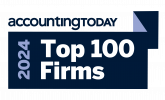This article was updated on April 7, 2020. Updates to this article will be made as new information becomes available.
Important Update on the Payroll Protection Program Under the CARES Act
On April 6, 2020, the U.S. Small Business Administration (“SBA”) published Frequently Asked Questions in regards to the implementation of Section 1102 – Paycheck Protection Program (“PPP”) and Section 1106 – Loan Forgiveness Under the CARES Act.
The following summarizes the key questions addressed:
Q: Are small business concerns as defined in Section 3 of the Small Business Act (“Section 3”) required to have 500 or fewer employees to be eligible under the PPP?
No. A business is eligible if it meets EITHER of the following two (2) standards:
1. Meets the definition of a small business concern under Section 3. To meet this definition, a business must meet ANY (NOT ALL) of the following three conditions:
- SBA industry standards for employee-based size requirements; OR
- SBA industry standards for revenue–based size requirements; OR
- The alternative size standard. The alternative size standard requires a business meet BOTH of these two (2) conditions:
- Maximum tangible net worth of not more than $15 million; AND
- Average net income after Federal income taxes (excluding carryover losses) for the past full two fiscal years of not more than $5 million.
2. If it employs not more than the greater of 500 employees OR the size standard in number of employees established by the SBA for the industry in which the business operates.
Q: Are borrowers required to apply the SBA’s affiliation rules under 13 C.F.R. 121.301(f)?
Yes, borrowers must apply the affiliation rules set forth in the SBA’s PPP Interim Final Rule. A borrower must certify on the application that it is eligible to receive a PPP loan, which means that the borrower is a small business concern under Section 3, meets the applicable SBA employee-based or revenue-based size standard, or meets the tests in the SBA’s alternative size standard after applying the affiliation rules.
Q: The CARES Act excludes from the definition of payroll costs any employee compensation in excess of an annual salary of $100,000. Does that exclusion apply to all employee benefits of monetary value?
No. The exclusion applies only to cash compensation, not to non-cash benefits including: (1) employer contributions to retirement plans; (2) payment for employee benefits consisting of group health care, including insurance premiums; and (3) payment of state and local taxes assessed on compensation.
Q: What time period should borrowers use to determine their number of employees and payroll costs to calculate maximum loan amounts?
Borrowers can calculate aggregate payroll costs based on the last 12 months or calendar year 2019. For seasonal businesses, the applicant may use the average monthly payroll between February 15, 2019, or March 1, 2019, and June 30, 2019. If the applicant was not in business during this time, it may use the average monthly payroll costs between January 1, 2020 and February 29, 2020.
Borrowers can use the average employment over the same time periods methodology to determine their number of employees for the purposes of applying an employee-based size standard. Alternatively, they can use the SBA’s usual calculation: the average number of employees per pay period in the 12 completed months prior to the date of loan application (or the average number of employees for each of the pay periods that the business has been operational, if it has not been operational for the prior 12 months)
Q: Should payments that an eligible borrower made to an independent contractor or sole proprietor be included on calculations of the eligible borrower’s payroll costs?
No.
Q: How should a borrower account for federal taxes when determining its payroll costs for the purposes of the maximum loan amount, allowable uses of a PPP loan, and the amount of loan that may be forgiven?
Payroll costs are calculated on a gross basis without regard to federal taxes imposed or withheld (including employer and employee FICA and income taxes required to be withheld from employees). Therefore, payroll costs are not reduced by taxes imposed on an employee and required to be withheld by an employer. However, payroll costs do not include the employer’s share of payroll tax.
If you need more information, please reach out to any of your contacts at Schneider Downs or contact Joel Rosenthal ([email protected]) or Steve Thimons ([email protected]) directly.
Please visit our Coronavirus Resource Center for related content.




